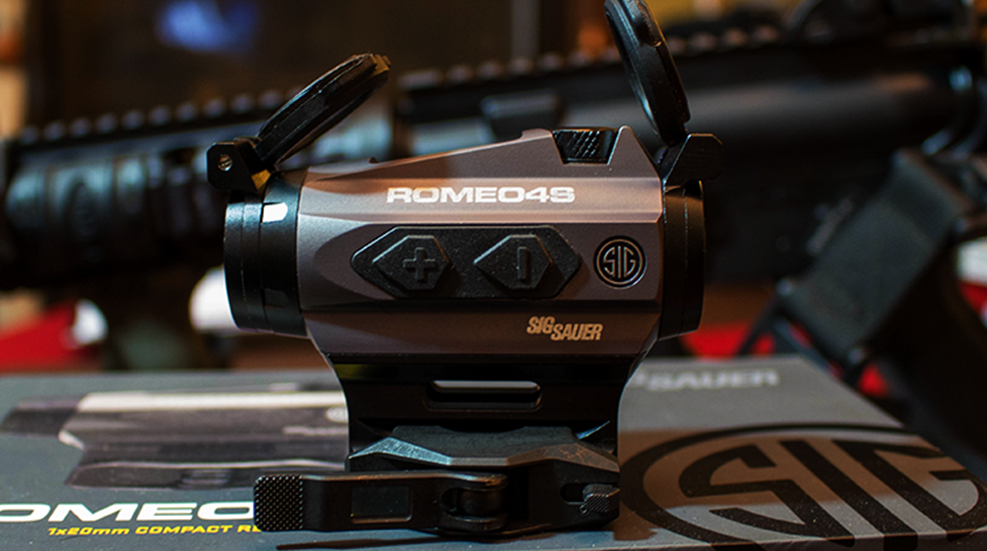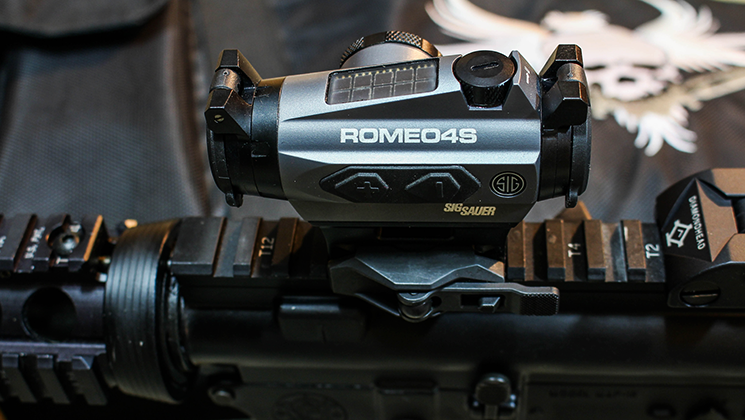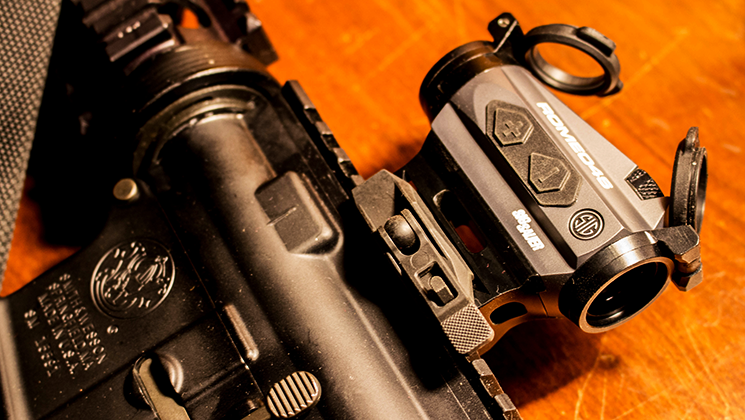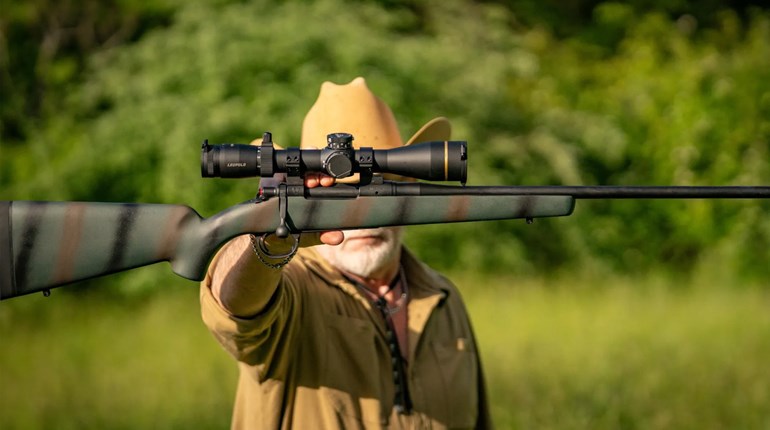
Optics are one of the fastest evolving segments of the shooting and hunting world. While the iron sights and peep sights of our grandfathers’ era are still viable, it’s impossible to deny the advancements in the industry. From riflescopes with unprecedented magnification ranges and light transmission, to the fiber optic sights and red-dot optics, aiming a firearm accurately has never been easier.
While there are always going to be traditionalists, I don’t mind mixing genres if it allows me to place my shots better. After all, a traditional Mauser 98 certainly wasn’t designed to be used with a riflescope, but we’ve all come around to accepting that marriage. Hell, I’ve even used a double rifle—definitely a hunting firearm designed for iron sights—with a Trijicon red-dot scope, and it made a world of difference.

I recently got my hands on a Sig Sauer Romeo4S—one of their lightweight red-dot optics—and was rather impressed with the possibilities and flexibility of the unit. Sig Sauer has made quite a splash recently with its optics line, and from their riflescopes to this red-dot unit, I’ve been impressed. The company’s Romeo series is based around a strong, light aluminum frame, with a base that is easily attached to any Picatinny rail. The QD base is set at a height of 1.41 inches; it will perfectly co-index with the iron sights of most of the AR-platform rifles. That QD base stays exactly where you put it, as the attachment is strong, yet is removed easily with one hand. And that may be the most difficult part of operating the Romeo4S.
This unit is packed with numerous common-sense options, which made using the sight a pleasure. I mounted it on an accurate Smith & Wesson M&P 15, a rifle that had proven its worth with both iron sights and riflescope. After installing the CR2032 battery (provided with the unit), zeroing the Romeo4S was no difficult task at all. Elevation and windage adjustments—located in the traditional spots, on the top and right side of the unit—will move the point of impact ½ MOA per click; the small adjustment knobs can be turned with a coin or with the screwdriver-like protrusion on the windage adjustment cap. The left side of the unit has two rubberized buttons labeled ‘+’ and ‘-’, and as you may have guessed, these control the intensity of the sight. Holding both buttons down simultaneously will allow the shooter to toggle between the four available reticles inside the Romeo4S. They range from a single red dot, to a series of vertical dots for holding different ranges, to a single dot with a circle, to that series of vertical dots with the circle. It’s simple and quick to switch between those reticles, and the user will quickly develop a feel for the location of those buttons that control the unit. A small solar panel on the top of the unit completes the list of external features, perfect for maximizing battery life; according to Sig Sauer, that life can be nearly 100,000 hours.

The Romeo4S offers true 1x magnification, so the shooter can easily keep both eyes open while shooting. That is a great point for those choosing to use the unit on a defensive weapon, but I can easily see the Romeo4S in the hunting field. Just as iron sights keep a rifle light and balanced, a red-dot sight can do the same while removing the difficulties associated with three different focal planes and a set of aging eyes. For those that hunt deer in thick forests, a Romeo4S would make an excellent choice. The 2MOA center dot covers one inch at 50 yards, and I’ve got quite a few stands where 50 yards may be the longest shot available. Because Sig Sauer has designed the Romeo4S with what they call ‘unlimited eye relief’, you can mount the unit anywhere along the receiver or barrel you’d like. If you want a scout-style rifle, it’s no problem. If you prefer a more traditional location, over the receiver, that works equally well. I could easily see a hunter extending the use of an MSR topped with a Romeo4S when calling coyotes or foxes, and I could even see a turkey hunter using one of these handy little units. It’d make a great sighting system for a ranch rifle, or even—don’t hate me—on a lever gun.
Sig Sauer sends the Romeo4S out with the Infinite Guarantee, which covers the product for life. I’ll quote their instruction manual: “It doesn’t matter how it happened, whose fault it was, or where you purchased it.” I can live with that.
The red-dot sights might take some getting used to, but I feel they’ll gain popularity once hunters have spent more time with them. They’re fast, accurate and reliable, and that fills a role in the hunting fields. Not everything is done at a quarter-mile.
Technical Specifications
• Type: red-dot sight
• Magnification: 1X
• Objective Lens Diameter: 20mm
• Eye Relief: unlimited
• Reticle: illuminated; 1 MOA circle dot or 2 MOA circle plex
• Adjustments: .5 MOA
• Construction: aluminum housing; waterproof; fogproof; QR mount and low mount included
• Battery Life: 100,000+ hours with solar
• Battery Type: CR2032 (included)
• Dimensions: 3.3″ length; 1.83″ width
• Weight: 3.4 ozs.
• Accessories: transparent lens covers; quick-release mount
• MSRP: $539; sigsauer.com



































